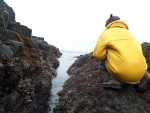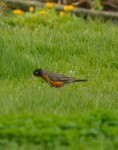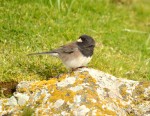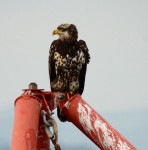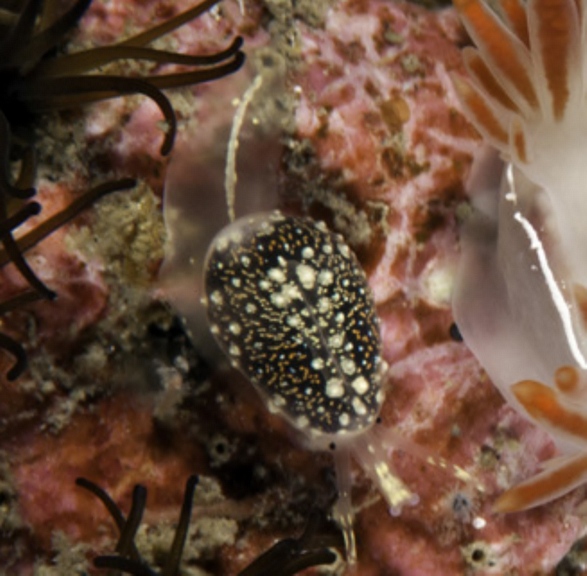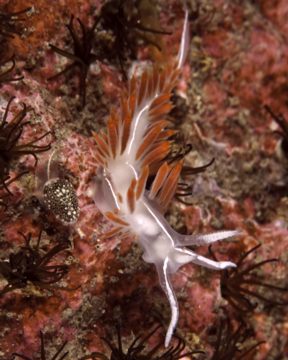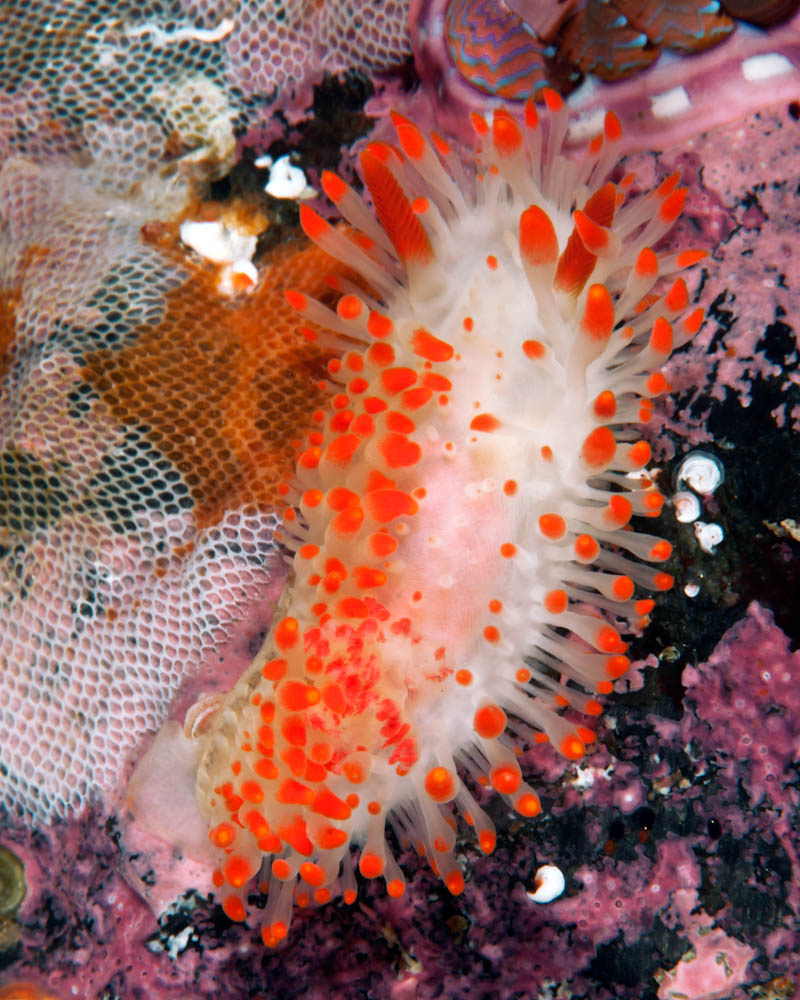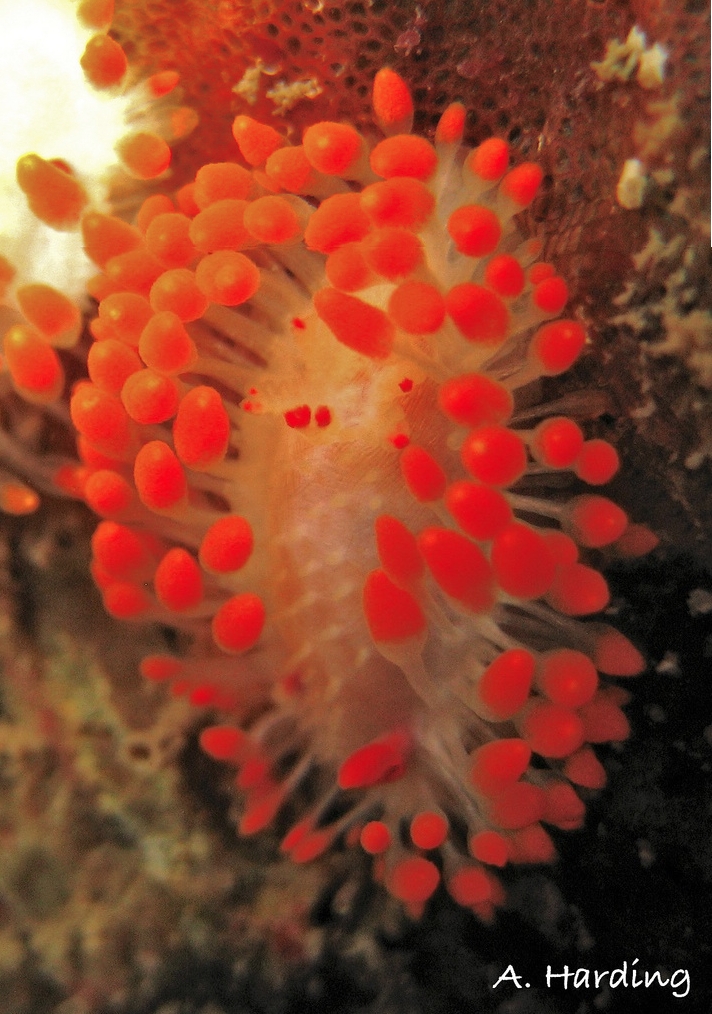Cloudy, with fog in the morning
Wind: 0 – 16 knots from the W then NE in the morning, switching to SE in the afternoon
Air Temperature: High 10°C, Low 7°C
Ocean Temperature: 8.9°C
This morning, the Pearson students here for Project Week helped stack firewood in the cupboards outside of the Engine Building.
Four oregon juncos and a robin were seen flying around the southern part of Great Race.
This afternoon, four students took part in rescue diving scenarios with Chris. Afterwards a few of them went snorkelling around the jetty to check out the sea stars, a sea slug and other species.
Chunk continues to hang out near the Marine Science Centre.
Three ecotour boats came into the ecological reserve to share the sights, sounds and smells of the marine mammals and birds with their customers.
- Chris runs rescue scenarios with the divers: Sean, Yam, Bader and Martin.
- Race Rocks now has one less canada goose thanks to a bald eagle. There are enough down feathers on the south eastern side of Great Race to make a duvet!
- Chunk smells the daffodils
- Chunk and his proboscis
- A community of goose-neck barnacles
- Neel checking the goose-neck barnacles
- Photo by Nick Townley Mar10,2015
- Dark eyed “Oregon” junco
- An oregon junco near the Energy Building with a fly buzzing overhead
- A juvenile bald eagle perches on the top of the crane.





